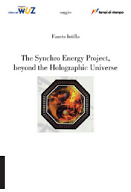
Scientists for decades have been hunting for ways to harness the enormous force of the sun and stars to supply energy here on Earth. The National Ignition Facility at the Lawrence Livermore Laboratory may spark the light at the end of the tunnel.
The facility was dedicated today (May 29) at a ceremony attended by numerous state and national officials.
Roughly the size of three football fields, the facility houses the world’s largest laser. Within the next three years, its 192 laser beams will deliver massive amounts of energy at a pea-sized target. That target, filled with hydrogen fuel, will in turn release 10 to 100 times the power than the amount injected by the laser.
Roughly the size of three football fields, the facility houses the world’s largest laser. Within the next three years, its 192 laser beams will deliver massive amounts of energy at a pea-sized target. That target, filled with hydrogen fuel, will in turn release 10 to 100 times the power than the amount injected by the laser.
When all of the lasers’ energy slams the target, it will generate unprecedented temperatures in the target materials - temperatures of more than 100 million degrees and pressures more than 100 billion times the Earth’s atmosphere. These conditions are similar to those in the stars and the cores of giant planets. Igniting these conditions will create nuclear fusion, which is the reaction that gives the sun and the stars their immense power. Mimicking and controlling the highly volatile process - tantamount to creating a star in a laboratory - could lead to ways to produce plentiful clean and safe energy.
While demonstrating nuclear fusion as a viable means for abundant clean energy may be the most exciting offshoot of NIF research, another of its roles is to study the conditions associated with the inner workings of nuclear weapons.
The NIF is a cornerstone of a critical national security mission to ensure the reliability and safety of the U.S. nuclear stockpile without conducting underground testing. At NIF, scientists will be able to provide data for supercomputer simulations that replicate conditions that exist inside a thermonuclear weapon.
NIF experiments will also help scientists who are trying to understand the universe in many fundamental ways, including astrophysicists learning about the hot, dense interiors of large planets, stars and other phenomena.
Provided by University of California
While demonstrating nuclear fusion as a viable means for abundant clean energy may be the most exciting offshoot of NIF research, another of its roles is to study the conditions associated with the inner workings of nuclear weapons.
The NIF is a cornerstone of a critical national security mission to ensure the reliability and safety of the U.S. nuclear stockpile without conducting underground testing. At NIF, scientists will be able to provide data for supercomputer simulations that replicate conditions that exist inside a thermonuclear weapon.
NIF experiments will also help scientists who are trying to understand the universe in many fundamental ways, including astrophysicists learning about the hot, dense interiors of large planets, stars and other phenomena.
Provided by University of California















Nessun commento:
Posta un commento